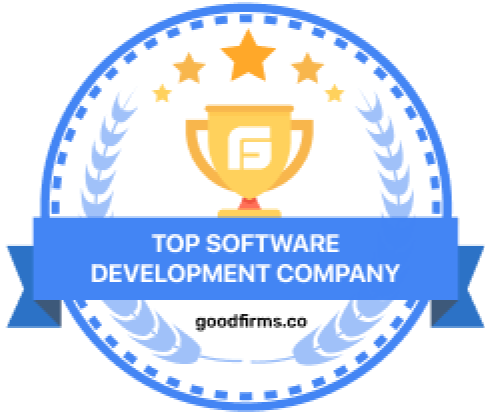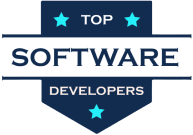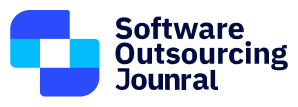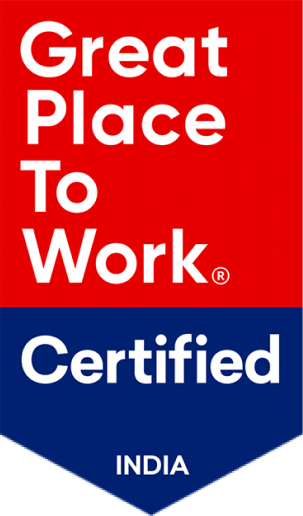Agile project management is now the foundation of software development because it is flexible, collaborative, and progressive. Agile project tracking software helps teams manage projects efficiently. Not only does it help in tracking tasks and sprint progress, but it also ensures transparency, communication, and accountability across the team.
The effectiveness of agile practices should be maximized by the kind of software chosen, which would be feature-rich, highly customizable, and also capable of integration with other tools. In this blog, we will discuss 15 must-have features in agile project tracking software, each explained with real-world examples, use cases, and scenarios that clearly demonstrate how these add value to agile teams.
15 Key Features in Agile Project Tracking Software:
1. Customizable Workflows
Each team also has different work processes and procedures. Workable workflows can set up specific items, stages and transitions, creating the ability for teams to flexibly tailor-fit the software they are using on their specific tasks.
For example, a group of product development may need varying stages of – design, developments, testing- while a different group, possibly marketing, needed strategy, then execution, analysis.
Use Case:
A development product team can separate workflows into different types of tasks, for instance- feature development as against bug fixes. Automated transitions between stages can be used to ensure smooth flow of a project and the increased cooperation between departments.
Example:
Using tools such as Jira, teams can create workflows that contain custom statuses and transitions, meaning that every member of the team will know exactly what to do next, based on the current stage of the task.
2. Task and Issue Management
The core of any agile project lies in managing individual tasks or user stories. It is efficient to manage tasks and issues in the tool so that teams can capture, assign, prioritize, and track tasks throughout the sprint lifecycle. This would ensure clear knowledge of who works on what and avoid bottlenecks.
Use Case:
A software development team may encounter a bug in the code that requires urgent attention. The task or bug issue can be created, assigned to the right team member, prioritized, and tracked to resolution without delays.
Example:
Trello offers an easy-to-use interface for task management where tasks can be moved across different boards representing the status, such as To Do, In Progress, Done, and assigned to specific team members with deadlines and priority tags.
3. Sprint Planning and Management
Organizing the work into suitable units that are called sprints is one of the main pillars for agile project management. Sprint planning tools, therefore, assist teams in breaking work and allocating this work to specified sprints. The incorporation of this feature lets teams maintain focus on short-term objectives while maintaining the overall view of the project.
Use Case:
In Scrum methodology, teams plan their work for a two-week sprint. Each member of the team selects a task from the sprint backlog, which is aligned with the overall product vision.
Example:
In Monday.com, teams can set up sprint boards where tasks are divided across weeks. Each task is associated with a sprint, helping teams see their workload for the current and upcoming sprints. They can quickly check how much work is left and whether they are on track.
4. Backlog Management
Effective backlog management assures that teams will be working on the most important items first. The maintenance of an agile product backlog is very important since it consists of all tasks, user stories, and features the team has to work on. Accessibility to the backlog must not be a problem, and team members should be able to refine, prioritize, and estimate tasks.
Use Case:
In backlog grooming sessions, the product owner might change the priority of certain tasks due to new market trends, and the development team will ensure that the highest-priority items are taken up for the next sprint.
Example:
Jira allows users to create a product backlog where they can prioritize user stories based on business value. Backlog grooming sessions ensure that the most critical tasks are moved to the top.
5. Burndown and Burnup Charts
Burndown and burnup charts help teams track progress in a sprint or project. A burndown chart indicates the amount of work remaining in the sprint, while a burnup chart shows the amount of work completed. These charts allow teams to visualize their progress so that they can make rapid course corrections if necessary.
Use Case:
If the team realizes they are at risk of completing their work within the sprint (according to the burndown chart), the team can re-estimate their backlog and reassess it, which can help to plan work better.
Example:
ClickUp has an integrated burndown and burnup chart, and teams can visually see work remaining and work completed. This enables the project manager to realize whether this sprint is on track, and possible corrections can be made.
6. Kanban Boards
Kanban boards are a visual representation of work in progress, allowing teams to manage tasks as they flow through various stages of completion. Kanban helps ensure that work is evenly distributed, and bottlenecks are identified early.
Use Case:
A team might have a visual representation of tasks (e.g., development, testing, deployment) to ensure that no team member is overwhelmed with tasks, and work is evenly distributed.
Example:
Trello and Asana have boards with Kanban boards, which display tasks in columns labeled “To Do,” “In Progress,” and “Done.” The visual layout allows teams to easily track work and know what needs attention and what is done.
7. Collaboration and Communication Tools
Communication is key in agile project management. Whether it’s quick updates on progress, discussions about issues, or brainstorming solutions to problems, collaboration tools integrated into the software help streamline communication. Features like real-time chat, file sharing, and task-specific comments are essential for keeping everyone in the loop.
Use Case:
A project manager can use integrated communication tools to notify team members of updates or ask clarifying questions about specific tasks.
Example:
Slack is integrating agile project tracking software like Jira, whereby team members may discuss issues, comment on tasks, and quickly update one another. Integration into Jira ensures that these discussions are centralized and linked to the specific tasks they pertain to.
8. Time Tracking
Tracking time spent on tasks is essential for understanding productivity, resource management, and improving estimates. Time tracking features allow teams to log hours spent on specific tasks, which can help managers understand the accuracy of their original estimations and make adjustments for future sprints.
Use Case:
A team is tracking the amount of time that is spent to develop a particular feature. Such a time is then compared with estimates to ascertain if the team has to readjust future estimations for a similar task.
Example:
Harvest connects with Asana and Trello, hence, teams are allowed to log their time into the tasks, helping managers have a clue where time is spent, and make sure that it’s used well.
9. Resource Management and Allocation
Resource management helps ensure that team members are performing the right kind of work with regard to their skills, availability, and workload. Agile project tracking software should enable project managers to allocate resources effectively, prevent overwork, and balance workloads.
Use Case:
In a cross-functional team, a developer might need to work closely with a designer and a product owner. The software helps ensure that all the necessary team members are assigned and available for the tasks at the right time.
Example:
Wrike allows managers to assign tasks to resources, track their availability, and ensure that no team member is overburdened. It also gives visibility into each team member’s workload.
10. Reporting and Analytics
Detailed reports and analytics are a must to track progress, identify issues, and make data-driven decisions. Agile project tracking software should allow teams to generate reports based on various metrics such as team velocity, sprint progress, and work completed.
Use Case:
A Scrum master can use a report to track the velocity of the team over multiple sprints and analyze how it changes with different types of work or different team compositions.
Example:
Monday.com provides custom reporting capabilities that help teams track team velocity, sprint progress, and sprint health. This allows managers to quickly understand the health of the project and make timely adjustments.
11. Integrations with Other Tools
Agile teams today in the digital landscape use a wide variety of tools for version control (GitHub), testing (Selenium), communication (Slack), and issue tracking (Jira). The integration allows the information to flow seamlessly between the tools so that teams can work more efficiently.
Use Case:
When developers commit code changes to GitHub, the integration with Jira automatically updates the task status, linking the code changes to specific user stories.
Example:
Jira integrates with GitHub and Slack; code commits and discussions tracked along with tasks in these platforms ensure minimum redundant updates and keep the teams informed in real time.
12. Role-based Access Control
There are various roles that make up agile teams and all of these require different levels of access. Role-based access control ensures that only authorized team members have access to sensitive data and thus will protect the confidentiality of certain aspects of the project.
Use Case:
The product owner needs access to the backlog and sprint reports, but developers only need access to the tasks assigned to them. With role-based access, the team ensures that everyone has access to only what they need.
Example:
Azure DevOps provides customizable access control settings for different roles such as product owners, developers, and testers. Each team member’s access can be customized based on their responsibilities.
13. Customizable Dashboards
Customizable dashboards enable the project manager to create personalized views based on key performance indicators or metrics relevant to his role. Dashboards can quickly give a view of project health, thereby helping managers make informed decisions.
Use Case:
A product owner might prefer a dashboard showing overall sprint progress, team velocity, and backlog items, while a Scrum master may focus on individual team member workloads and task status.
Example:
ClickUp offers fully customizable dashboards that allow users to create their own views with widgets that focus on the metrics they care about most.
14. Risk Management and Issue Tracking
Risk management is an important part of agile project tracking. The ability to track potential risks, resolve dependencies, and identify blockers early on ensures that the project stays on track and issues don’t escalate.
Use case:
Potential risk identification might flag an unavailable third-party service. The software monitors the risk, attaches an owner to work toward eliminating it, and ensures the issue is reported before impacting the sprint.
Example:
In Jira, risk management is integrated into issue tracking. Project managers therefore can track and work toward reducing risk in real-time. This means that risk mitigation efforts have a corresponding record side by side with task completion.
15. Mobile Access
In today’s fast-paced work environment, team members might need to access the project data while on the go. Agile project tracking software with mobile access ensures that updates, changes, and communications are done with all convenience required from anywhere.
Use Case:
A project manager who has to travel to attend a conference can track the sprint’s progress and make instant decisions on the go so that the project remains on track, even if the project manager is not at the office.
Example:
Trello and Asana provide mobile applications where the user can follow the status of tasks, update them, and collaborate with colleagues on the move.
Conclusion
All that is needed are the right must-haves: agile project tracking software discussed here, and significantly improve your team’s efficiency and productivity. With customizable workflows, sprint planning, task management, or collaboration tools, the correct set of features enables agile teams to stay on top of things, meet their deadlines, and continuously improve the processes.
Investing in agile project tracking software that offers these essential features will help teams maintain flexibility, transparency, and focus on delivering high-quality products in a timely manner.
If you are looking to develop agile project tracking software to avail its benefits, we are here to help you with it. You can get in touch with us.

Start a Project with Ajackus













